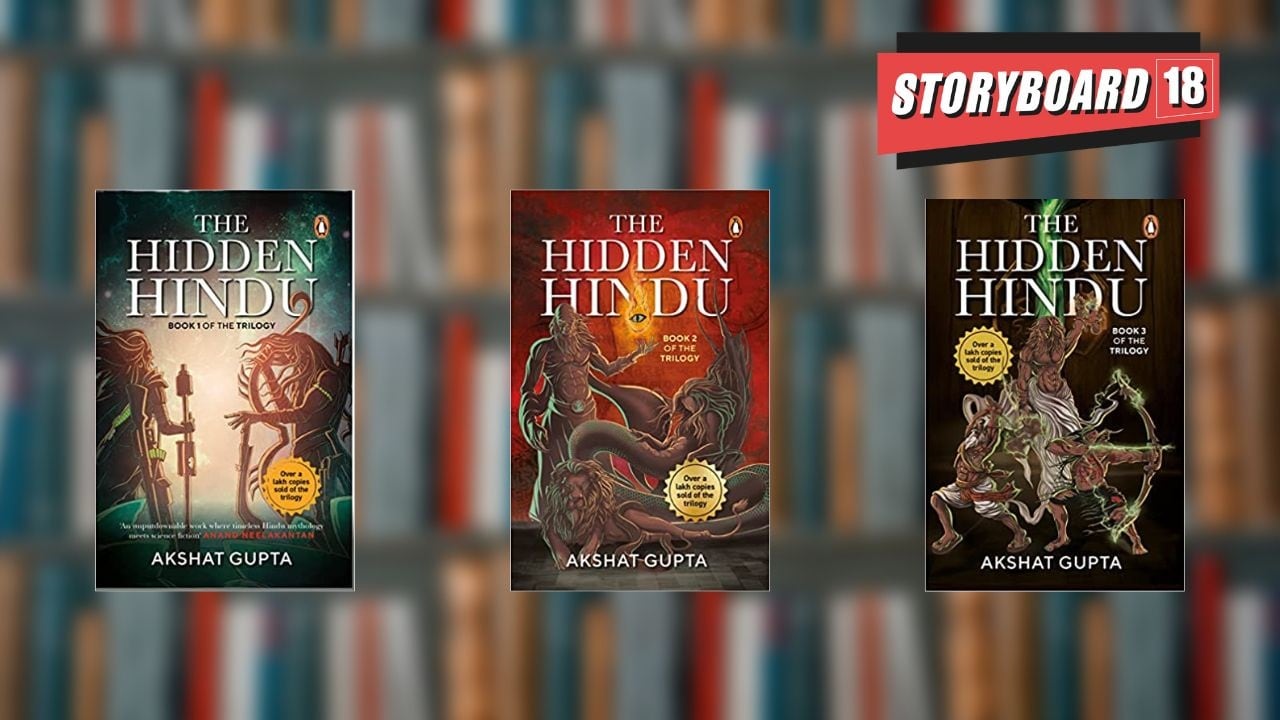Mythology at breakneck speed
Welcome to a new universe. A universe where a trail of murder is afoot. A universe that takes you across all of time- all the epochs enumerated in Hindu mythology. Author Akshat Gupta’s ‘The Hidden Hindu’ trilogy credits its copyright to Dhoni Entertainment, who picked up the OTT rights even before the first book was published.
I read all three books at once, which may have given me an unfair advantage over reviewers who’ve looked at the books individually. Here are our #Bookstrapping insights –
1. Book one introduces you to Prithvi, a young man on a quest for immortality. He’s looking for Om Shastri – a devotee of Lord Shiva- who has lived the life of characters from the time of Ramayana and Mahabharata. He was Shusen, the Vedic doctor who saved Laxmana’s life as well as Subhash Chandra Bose. “ I have been an Emperor. I have been a slave,’ he says, about his long innings.
2. Book two further unravels the mystery of Om Shastri’s past. An important question is posed to the reader- how have so many people been able to scale Mount Everest? The contrast is established vis-a-vis the sole Tibetan, Milarepa who managed to climb Mount Kailash, even though it is almost 7000 feet lesser than Everest. In doing so, a flush of fresh characters is introduced and the Taj Mahal turns black. Yes!
3. Book three cryptically reveals that the story is not over yet. This is perhaps the most philosophical part of the trilogy, where Om’s identity is revealed. The book says, ’Every man takes two births in life. The first is when he is born physically and the second occurs when he realises the purpose of his existence.’
4. One cannot miss the tendency for descriptive writing; the scenes are set vividly.The description of Paatal Lok as more beautiful than Swarga Lok in book three, is a case in point.
5. I spoke to a few fiction lovers. It turned out that Akshat Gupta, the author is both admired and not, in equal numbers; which is great because his writing is eliciting a response. What I also realised was that those who remembered (as they were reading) that the book is pure fiction- at every juncture- were enjoying it. Those who wondered how to draw the line between empirical truths and fictionalised religious philosophies, struggled to connect what they knew, to what they were reading.
Here’s a writer who attempted suicide after his marriage ended. Six years later,he published the first edition of The Hidden Hindu and re-scripted his life. He’s a bilingual writer, and there are instances where you realise this. The ordering of direct and indirect speech is visibly unique at times; at other times, a verse in Hindi or Sanskrit is not translated for the reader’s benefit.
But full credit to the imagination of the author.
Reeta Ramamurthy Gupta is a columnist and bestselling biographer. She is credited with the internationally acclaimed Red Dot Experiment, a decadal six-nation study on how ‘culture impacts communication.’ On Instagram @officialReetaGupta
